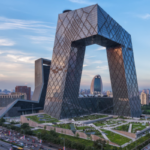

Lelia Lim
Navigating the Future of Work Amidst Asia’s Ageing Population| Lim-Loges & Masters
As populations in Asia grow older, the impact of an ageing population on the future of work is becoming increasingly important. As it currently stands, many economies in developing Asia are in a situation where they will grow old before they get rich!
The effects of this demographic shift on the future of work are far-reaching, necessitating innovative strategies and adaptations across corporate landscapes. Businesses and organisations across various sectors must transform their operations, workforce dynamics, and training protocols. The focus lies in equipping HR professionals with the tools to drive effective changes in response to the new demands from top-tier leaders and executives. But how do businesses adapt strategies related to age diversity and create long-term stability for all stakeholders?
The ageing population in Asia and its implications for the future of work
As the world’s population ages, the implications for the future of work are becoming increasingly apparent. In Asia, where more than half of the world’s elderly population lives, this trend is particularly pronounced. According to the Asian Development Bank, by 2050, individuals aged 65 and above will account for 18%, or 800 million, of the region’s total population, up from only 8% in 2019. This is compounded by the fact that there is a shrinking workforce as the number of people aged between 16 and 64 is set to peak by 2045 and then begin declining.
This demographic shift profoundly impacts the region’s workforce, as older workers remain in their jobs longer and younger workers struggle to secure employment in a highly competitive job market. To effectively address these challenges, businesses in Asia need to adapt to the changing needs of their workforce and invest in training and development programs that support both older and younger workers. Only by doing so can they ensure their organisations’ continued growth and prosperity in the years to come.
How to attract and retain an older workforce?
With this ageing workforce, companies must create environments that welcome older employees; a well-designed, inclusive workplace that helps retain experienced workers who may otherwise be pressured to retire. In turn, this can benefit the company by ensuring continuity of knowledge and skills and providing a mature and stable culture.
It’s high time businesses unlock the untapped potential of older workers, coupling the wisdom, experience, and skills they offer with the enthusiasm and innovation of the younger workforce. This diversity can become an organisation’s secret weapon to outpace competitors. We need not just an environment that merely appreciates older employees but one that truly celebrates their unique insights, perspectives, and contributions. In doing so, we attract a rich tapestry of talent and foster a thriving workforce that carries the organisation into a prosperous future.
Leveraging technology to support the needs of an ageing workforce
Technology has also become a game changer in supporting the needs of our ageing workforce. It’s not just drawing senior workers back into the labour market but also supercharging their productivity. We are no longer in an era of manual, physically draining tasks but an age of automation, where industrial robots are set to increase by a staggering 120% from 2016 to 2020.
Moreover, technology is redesigning the way we work, implementing flexible work practices that appeal to a broad spectrum of workers. Also, with the assistance of new technology, job-matching and training services are set to fuel the participation of seniors in the workforce. Think innovative, customised, and interactive training using cutting-edge technology – it’s the future of skill-building for our senior workforce
Maximising the potential of mature workers through job redesign
It’s also become increasingly essential for employers to find ways of maximising the potential of their mature workers. Redesigning job roles and responsibilities to reflect the skills and experience of this cohort of employees can go a long way in achieving this goal.
Mature workers are invaluable, possessing a wealth of knowledge and expertise that can only be gained through years of experience. By tapping into this resource, businesses can benefit from increased productivity, better problem-solving skills, and improved employee retention rates. Additionally, by redesigning job roles and responsibilities to allow for more flexibility and creativity, mature workers can continue contributing meaningfully while reaping the benefits of a fulfilling and satisfying career.
Re-evaluation of workplace policies to improve job quality for mature workers
To retain experienced and skilled workers, companies must re-evaluate their workplace policies. This can ensure that older workers can access flexible schedules, training opportunities, and other benefits that cater to their needs. For instance, offering mentorship programmes can help more senior employees feel valued and invested in the company’s growth. Implementing such policies can lead to higher job satisfaction and better performance from mature workers, ultimately benefiting both the employee and the employer. As businesses adapt to the changes in the modern workforce, prioritising the needs of older workers can positively impact the bottom line.
Strategies to capitalise on what an ageing workforce offers
Employers can reap significant benefits as the workforce ages by leveraging their senior employees’ experience, knowledge and skills. Undoubtedly, the ageing workforce presents unique challenges, including the potential for higher healthcare costs, absences, and reduced productivity. However, forward-thinking employers can tackle these concerns by considering innovative strategies to capitalise on the advantages of their older employees.
For instance, companies can invest in training opportunities for senior staff to build new skills and competencies to keep pace with technology advancements. Additionally, allowing flexible working options can help retain top-performing employees, reduce absenteeism and boost morale.
Ultimately, employers who embrace the benefits of their ageing workforce can gain a competitive edge, enhanced creativity and innovation, and an inclusive, diverse, and vibrant workplace culture.
Top Tips for Leaders to Manage an Aging Workforce
- Embrace Diversity
Embrace age diversity as an asset. Older workers bring years of experience, wisdom, and stability to the workplace. Recognising and valuing these distinct perspectives can stimulate creativity, innovation, and problem-solving.
- Invest in Training
Invest in continuous learning and development programs tailored to the needs of the older workforce. This can include digital literacy training or upskilling initiatives to keep pace with technological advancements.
- Promote Flexibility
Implement flexible work arrangements such as remote work, part-time hours, or job sharing. This not only accommodates the needs of older workers, but also fosters a more inclusive work environment.
- Prioritise Health and Wellness
Prioritise health and wellness initiatives catering to older employees’ specific needs. This could include ergonomic workspaces, wellness programs, or health insurance benefits suited to their needs
- Encourage Mentorship
Establish mentorship programs that allow older workers to share knowledge and expertise with younger employees. This can foster a culture of learning and respect across different generations.
- Re-evaluate Workplace Policies
Regularly review and update workplace policies to ensure they cater to the evolving needs of an ageing workforce. This can enhance job satisfaction, retention rates, and overall workplace morale.
- Leverage Technology
Leverage technology to aid older employees that can enhance efficiency and comfort in the workplace.
By implementing these strategies, leaders can create a supportive and productive work environment that values the contributions of an ageing workforce.
Asia’s rapidly greying population is set to redefine the landscape of work. This demographic shift isn’t just a challenge; it’s an opportunity to tap into a reservoir of wisdom and experience – to supercharge your business with seasoned professionals. Implementing policies that leverage the unique strengths of these mature workers can transform your workplace into a model of sustainable success.







